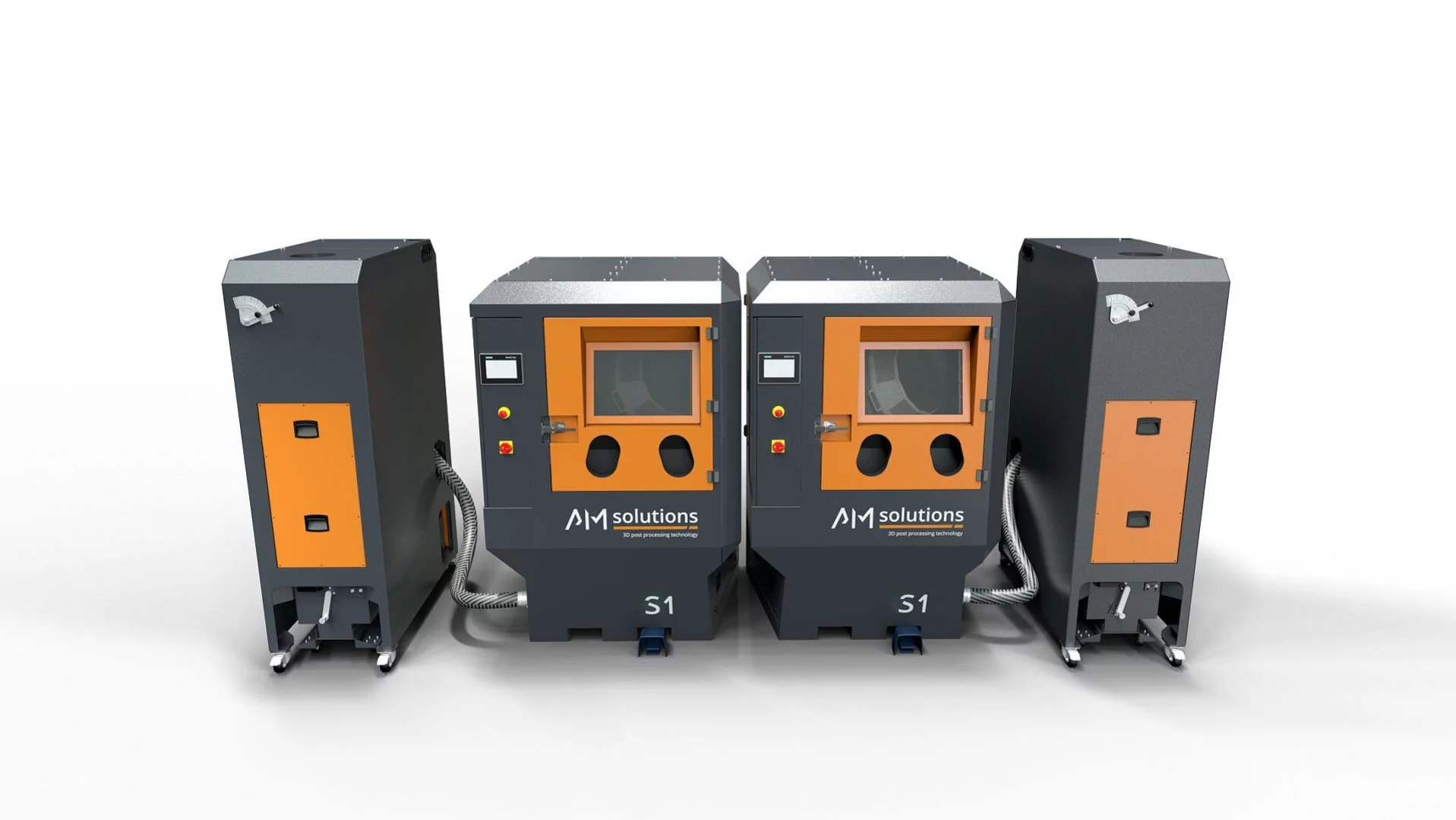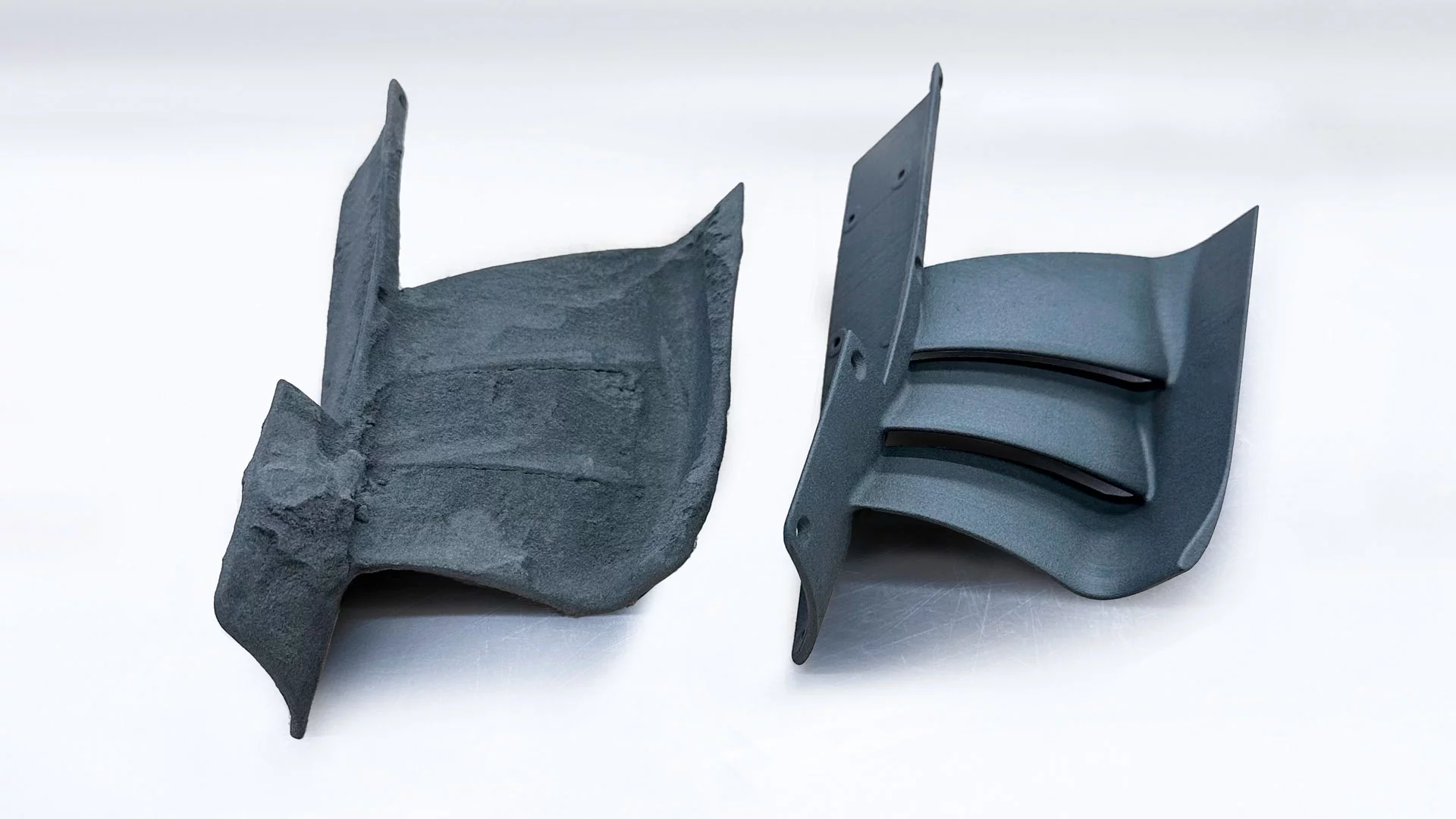Post-processing is an important step for any 3D printed part. It can have a large influence on final quality and can even affect mechanical properties. So, when large organizations additively manufacture their components, they need to find the post-processing solution that meets their needs.
Sauber Technologies, Sauber’s division for 3D printing solutions for their Formula 1 cars and other industries, knows this intimately and has been partnering with AM Solutions for several years. This time Sauber is expanding their post-processing capabilities with AM Solutions and is betting on the S1 shot blast machines to help their post-processing efforts.
 A picture of AM Solution’s S1 Machine. Image courtesy of AM Solutions.
A picture of AM Solution’s S1 Machine. Image courtesy of AM Solutions.The S1 machine combines the “cleaning” and “surface finishing” post-processing steps into one machine. It can handle both polymer and metal powder based prints and can hold, on average, 20 parts per cycle. Vitor Sousa, team leader for additive manufacturing of plastic components at Sauber Technologies AG, even called it the Swiss army knife for post processing because of the various functionalities the machine has.
Sauber has been using the S1 to post-process their selective laser sintered (SLS) HiPAC components. With it, Sauber says they save at least two hours per post processing cycle and are able to get extremely consistent results. The team also touted how simple the process has become with the S1 saying they only have to remove and visually inspect the parts instead of manually reworking and shot blasting the parts after printing too.
 A Sauber-Alfa Romeo 3D printed wing before (left) and after post-processing (right). Image courtesy of AM solutions.
A Sauber-Alfa Romeo 3D printed wing before (left) and after post-processing (right). Image courtesy of AM solutions.Another cool feature of the S1 is its use of Polystyrol instead of glass beads as blast media. Polystyrol can be used for both the “cleaning” and “surface finishing” steps and has a 15 times greater lifespan when compared to glass beads. The polystyrol beads have a lower abrasivity than glass beads and help get more materials out the first go around. All of this together has reduced the operating costs for Sauber and simplifies their maintenance as well.
Sauber has installed two S1 at their facilities, one for treating the white SLS parts and one for treating the black HiPAC parts. They wanted to eliminate color cross contamination, and so far, the team says it has done the job. The machines were also designed with a smaller footprint compared to a standard S1 and were specifically made to fit the geometries inside Sauber’s facilities.
Post processing might not be the most glamorous of the additive manufacturing space, but it is a vital one. Companies like AM Solutions and Sauber Technologies recognize its importance and are committed to improving it daily. Knowing how well this partnership has gone, the symbiosis will likely continue and together they will keep pushing the envelope for what post-processing additive parts can do.
Subscribe to Our Email Newsletter
Stay up-to-date on all the latest news from the 3D printing industry and receive information and offers from third party vendors.
You May Also Like
Further Understanding of 3D Printing Design at ADDITIV Design World
ADDITIV is back once again! This time, the virtual platform for additive manufacturing will be holding the first-ever edition of ADDITIV Design World on May 23rd from 9:00 AM –...
3D Printer Maker EVO-tech Reborn as NEVO3D — Once More With Feeling
EVO-tech was a 3D printing service and original equipment manufacturer established in 2013 and based in Schörfling am Attersee, Austria. The company produced high-quality material extrusion systems featuring linear bearings,...
3D Systems Brings 3D Printed PEEK Cranial Implant to the U.S. with FDA Clearance
For more than 10 years, 3D Systems (NYSE:DDD) has worked hand-in-hand with surgeons to plan over 150,000 patient-specific cases, and develop more than two million instruments and implants from its...
CDFAM Returns to Berlin for Second Annual Symposium
The second CDFAM Computational Design Symposium is scheduled for May 7-8, 2024, in Berlin, and will convene leading experts in computational design across all scales. Building upon the first event...































